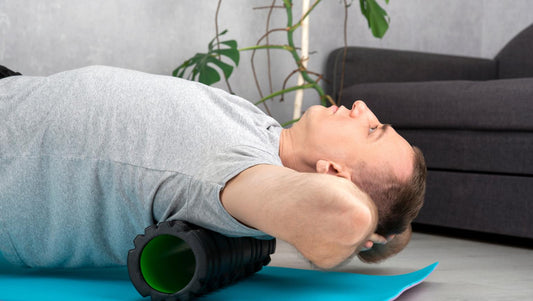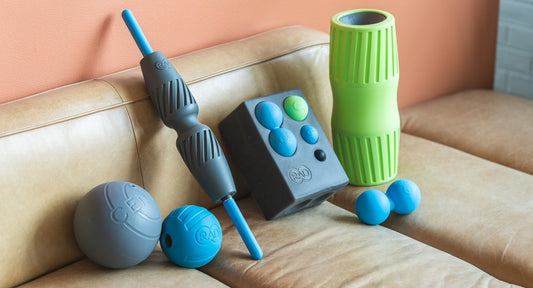The History of Pilates: A Journey of Innovation and Wellness
Pilates, a popular form of exercise known for improving flexibility, strength, and posture, has evolved over the years into a global fitness phenomenon. Its unique methods, which combine controlled movements with breathing techniques, are now incorporated into fitness studios and rehabilitation centers around the world. The roots of Pilates are deeply embedded in the early 20th century, stemming from the visionary work of its creator, Joseph Pilates.
Early Life of Joseph Pilates
Joseph Hubertus Pilates was born in 1883 in Mönchengladbach, Germany. His early life was marked by frailty and poor health, which fueled his desire to improve both his physical strength and overall well-being. As a child, Pilates struggled with asthma, rickets, and other health issues.
This difficult childhood experience shaped his passion for physical fitness whole body health, and led him to study various forms of exercise, including gymnastics, body-building, yoga, and martial arts.
Joseph Pilates developed a fascination with anatomy and the mechanics of the human body. He sought to understand the relationship between the body and mind, emphasizing the importance of proper movement patterns and breathing techniques for enhancing physical performance and overall health.
Development of Pilates Method
In the early 1900s, Pilates moved to England, where he began teaching self-defense and physical fitness. During the First World War, Joseph Pilates was interned in a British camp due to his German heritage.
It was during this period that he began to develop his unique system of exercise and physical education. Pilates trained fellow internees in strength-building techniques and rehabilitation exercises, using minimal equipment such as springs and makeshift devices to facilitate movements that targeted different muscle groups. When they couldn't find weights they would create resistance using body weight.
One of Pilates' key innovations was the "Reformer," as Pilates called a piece of exercise equipment he designed using a spring-loaded mechanism. This invention allowed for a greater range of motion and resistance, making exercises more effective. It is still used in Pilates studios today and is largely considered one of the fitness industry's first pieces of modern equipment.
Joseph Pilates' first exercise method used, initially called "Contrology," was based on the principles of control, concentration, precision, breath, and flow. Contrology focused on the idea that the mind should control the body, and exercises were designed to improve strength, flexibility, and posture through mindful, deliberate movement. These movement patterns designed a protocol anyone could follow to see results.
Pilates in America
After the war, Joseph Pilates moved to the United States in the 1920s, where he opened the first pilates studio in New York City. His work quickly gained attention from dancers, athletes, and physical therapists who recognized the benefits of Pilates' method. Dance professionals, including famous figures like Martha Graham and George Balanchine, were among the first to embrace the Pilates exercise, for its ability to enhance body awareness, prevent injury, and improve performance.
Pilates also became popular among injured soldiers and athletes seeking rehabilitation as well as the dance community. The system’s focus on controlled movements and strengthening muscles without causing strain made it ideal for physical therapy. Pilates became a staple in rehabilitation practices, helping people recover from injuries and improve their range of motion.
The Rise of Pilates in the Modern Era
After Joseph Pilates' death in 1967, his method continued to be passed down through his students and practitioners. In the 1980s and 1990s, Pilates gained significant traction as a mainstream fitness trend, thanks in part to the growing awareness of its physical and mental benefits. Celebrities, fitness enthusiasts, and health professionals began to embrace the pilates method alliance well, and Pilates studios began opening worldwide.
The growth of Pilates was also influenced by a renewed interest in mind-body connection practices, such as yoga and Tai Chi, that emphasized holistic health. Pilates' emphasis on alignment, strength, and flexibility fit well within this broader wellness trend, making it a highly sought-after practice for those interested in improving their overall fitness and body awareness.
Pilates Today
Today, Pilates is practiced by millions of people across the globe, both in specialized studios and in home settings. The method has evolved, with variations such as "Mat Pilates" (performed on a mat) and "Reformer Pilates" (using specialized equipment). Despite these adaptations, the core principles of Pilates—control, concentration, precision, breath, and flow—remain central to the practice.
Pilates has become a versatile and inclusive fitness system, accessible to individuals of all ages and abilities. It is used not only for fitness and rehabilitation but also for athletic training, injury prevention, and stress management. The method continues to be embraced by dancers, athletes, and fitness enthusiasts alike.
Modern Pilates Equipment
There have been more innovations in Pilates and fitness equipment throughout the years. Now a Pilates ball, or balance ball, is a common piece of equipment found in any studio. Yoga leggings and fitness clothing have also become more supportive, offering built in resistance opportunities. Weighted bands and arm and ankle weights are also popular.
Conclusion
The history of Pilates is a testament to Joseph Pilates’ vision and dedication to improving the human body’s strength, flexibility, and overall health. From his early days of overcoming personal health challenges to the development of his revolutionary first exercise program and system, Pilates’ legacy lives on through its transformative impact on the fitness world.
Today, Pilates remains one of the most effective and respected methods of physical fitness, offering countless benefits for individuals seeking to improve their health and wellness.




















